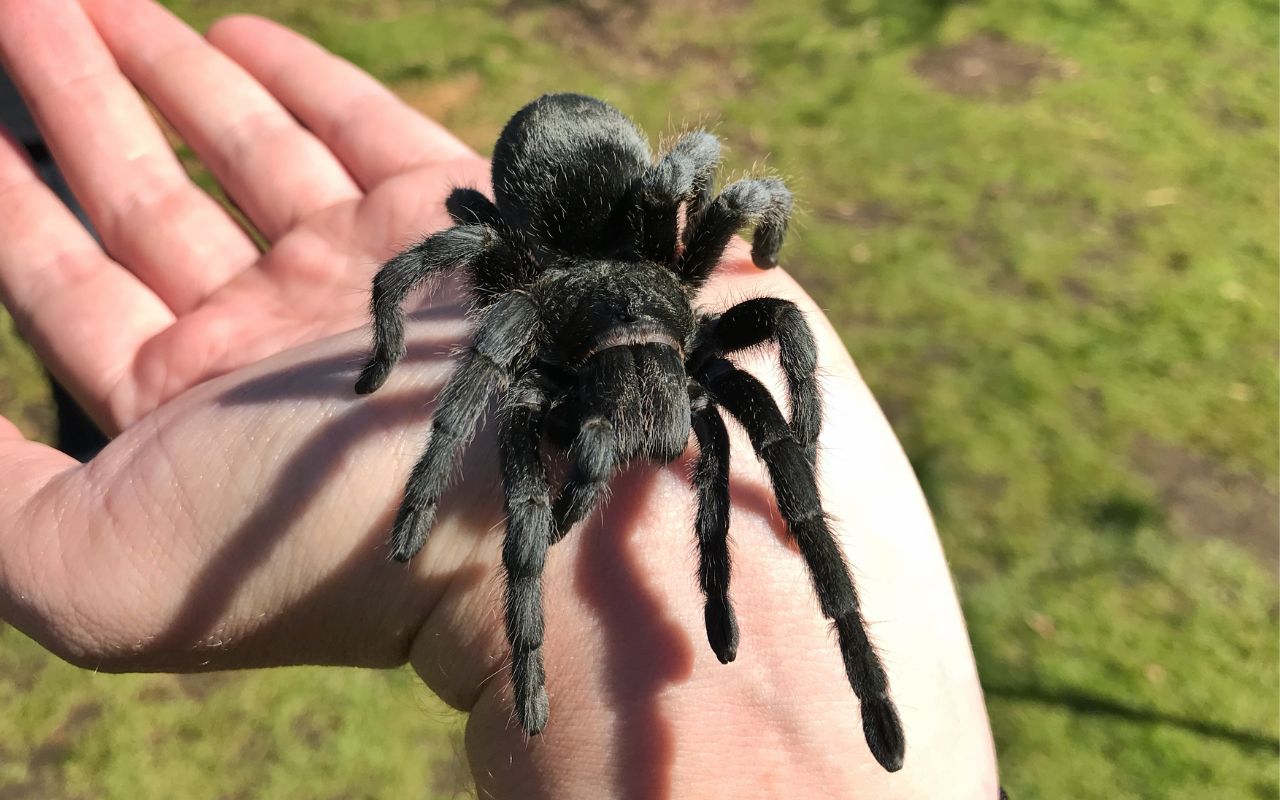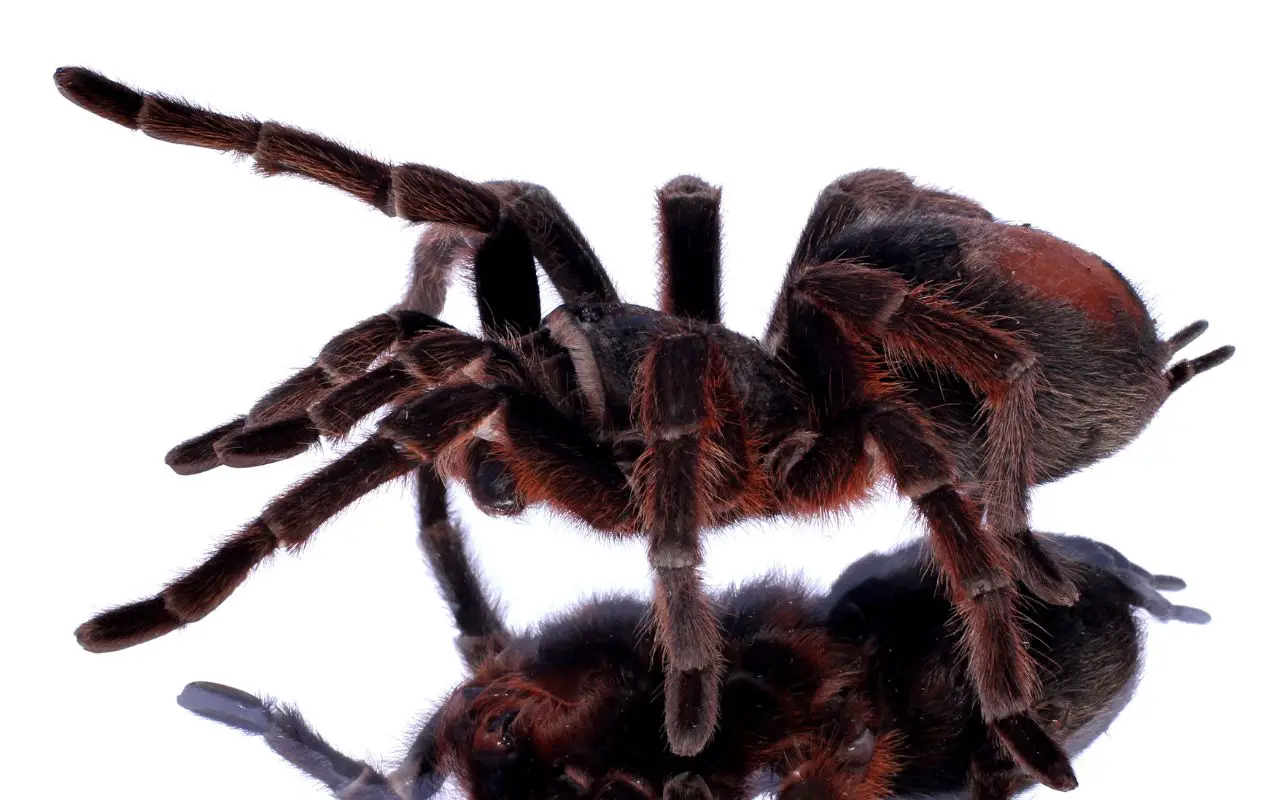Last updated on March 23rd, 2023 at 11:52 am
Time to take a look at our top 4 best pet tarantulas for beginners. Each one is docile, hardy and easy to care for, making it ideal for a first time owner…
The best pet tarantulas are those with a reasonably mild temperament, and which are hardy enough to withstand a few (slight) husbandry errors. Most of the time, this means New World species like the Mexican Red Knee and relatives. In this post, we’ll take a look at four such species, all of which are readily available for sale and make great pets.
The best Tarantulas for beginners (my choice)
Here I’ve selected four species that were some of the first I kept, and which have a record of living a long time in captivity. None of them have super-specific care requirements, and all them have a free care sheet available on this site (I’ll link to them in the descriptions).
At the end of the article, I’ve also provided some links to enclosures and other items you’ll need, so be sure to check them out!
In order of appearance, let’s learn more about the following species:
- Chilean Rose (Grammostola rosea)
- Mexican Red Knee (Brachypelma hamorii)
- Arizona Blonde (Aphonopelma chalcodes)
- Green Bottle Blue (Chromatopelma cyaneopubescens)
1. Chilean Rose (Grammostola rosea)
The Chilean Rose is one of the best pet species for beginners because they do not require a high level of humidity. In fact, too much humidity can be harmful for it.
A 5 gallon aquarium or equivalent plastic enclosure will provide ample space for a dry end and a wet end where the water dish should be. Water should be provided and replenished regularly, but should not be making the substrate damp unless the spider is molting.
It is important to note that many tarantulas refuse food several days before molting. However, the Chilean Rose tarantula molts only once or twice a year, so you won’t have to worry about this very often.
Chilean Rose availability and price
There are many places that sell Chilean rose tarantulas. But, it’s best to get your pet from a reputable breeder or rescue group. They will give you more detailed information about the history of the animal and the costs associated with it. Prices for Chilean rose tarantulas can range from $20 to $60 per animal, depending on its size and age.
In the wild, the Chilean Rose tarantula goes through a natural feeding cycle. If the weather is particularly bad, it can go months without eating. This is not unusual. In fact, it is not uncommon for a Chilean rose to go months without eating. Make sure that you provide plenty of fresh water. Although it is rare for a tarantula to feed daily, it is important to feed it once or twice a week when it does want to.
When you’re considering keeping a Chilean rose, you should consider what it eats. Like most species, Chilean rose hair tarantulas thrive on insects. Sometimes, these spiders are also opportunistic, which means that they’ll also eat small animals, such as mice. Live crickets and mealworms are common feeders, although the latter tend to be high in fat and low in nutritional value.
To learn more, read my full Chilean Rose care guide.
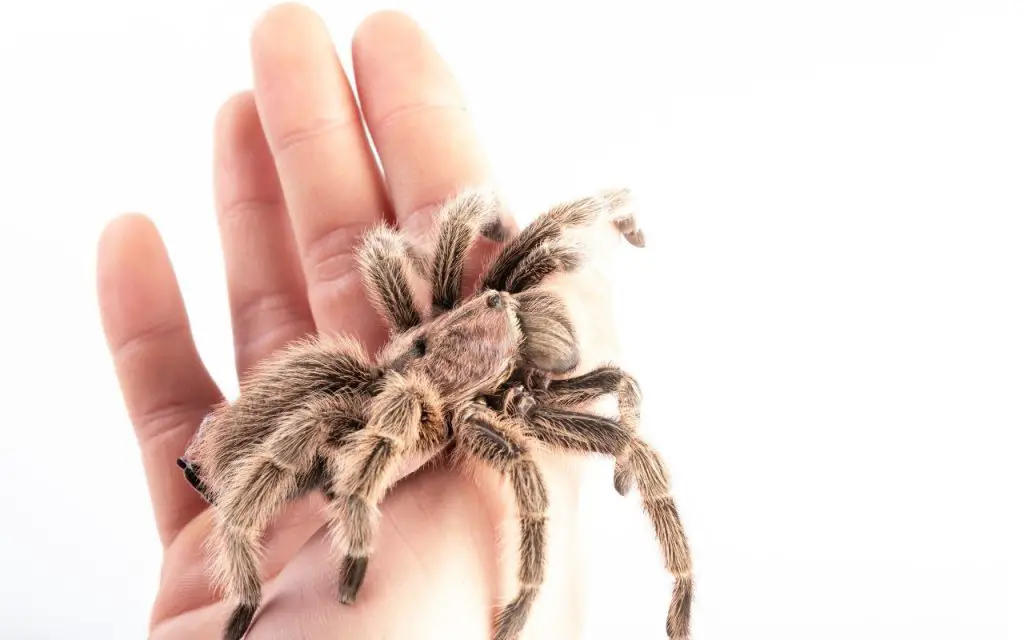
2. Mexican Red Knee (Brachypelma hamorii)
The Mexican Red Knee is one of the best pets a tarantula owner can get. Because it is native to Mexico, it requires consistent temperatures and humidity levels. If you don’t live in a hot climate, you can simply use a 5 watt heat mat stuck to the outside of the tank to maintain a comfortable temperature. The other side of the tank should be cool.
Although tarantulas are legal to keep in most states, it’s recommended that you buy a Mexican red knee from a reputable breeder or authorized dealer. While there are many breeders of red knee tarantulas, most of them are selling the Brachypelma hamori, which is less colorful.
Also, if you’re planning to breed your own Mexican red knee, it is best to avoid buying from a pet store. In addition, you should seek out a reputable rescue organization or buy it from a licensed breeder. A Mexican Red Knee tarantula needs a 5-10 gallon tank.
Mexican Red Knee temperament
Although the Mexican red knee tarantula is very docile and will be comfortable handling humans, you should always keep it away from other animals. This is because its bite can be very dangerous. The Mexican red knee tarantula will eject urticating hairs if it feels threatened. These hairs will penetrate the skin and cause irritation. If you accidentally get them in your eyes, they can cause a serious injury. Always wash your hands thoroughly after handling any tarantula.
A Mexican red knee tarantula is a slow moving species of tarantula. They are not known for spinning webs but instead hunt for their prey. This tarantula is known for being extremely docile and gentle. It can be tricky to handle though and will require a lot of patience.
A Mexican Red Knee tarantula needs at least 4 inches of substrate. You can use organic soil, coconut fiber, or sphagnum moss. It also needs proper humidity levels. If you don’t provide these two conditions, your tarantula may become stressed and unwell. A plant will provide some privacy.
To learn more, read my full Mexican Red Knee care guide.
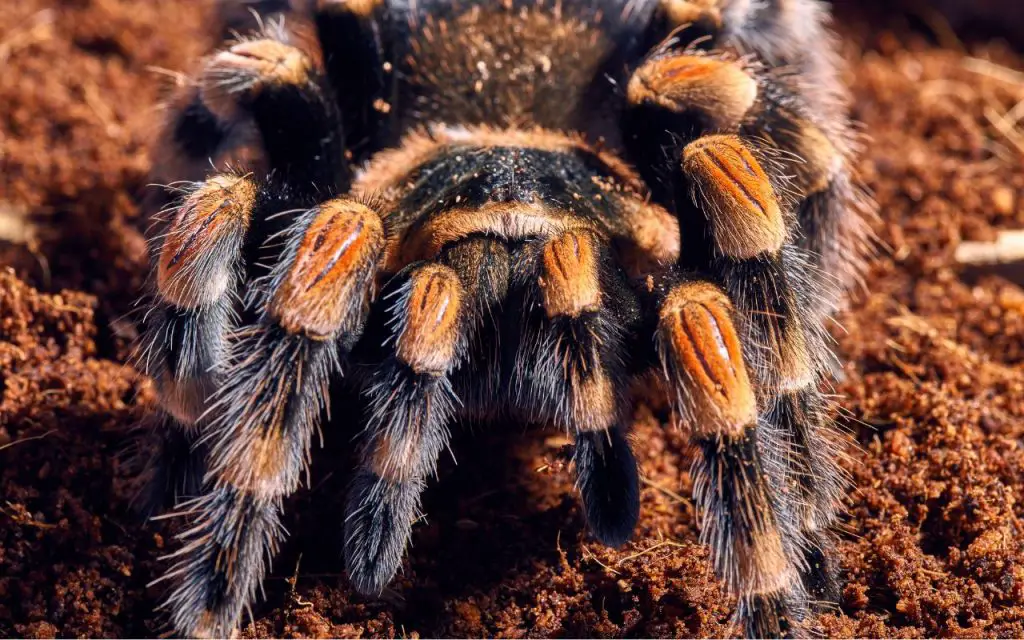
3. Arizona Blonde (Aphonopelma chalcodes)
The Arizona Blonde is native to the American southwest and one of the easiest pet tarantulas to care for, though the Brazilian Black is perhaps slightly more docile. The hairs on these nocturnal tarantulas are mostly blonde. They live in dry, open areas and prefer to burrow up to 12 inches into the ground. They have silk webbing for lining their burrows. The Arizona Blonde is a great pet for beginners.
Although the Arizona Blonde is an easy-to-care-for tarantula, it is important to remember that this arachnid is delicate nonetheless. Handling this arachnid too frequently will stress it and trigger a protective response.
A healthy Arizona Blonde tarantula can live up to 20-25 years in captivity. The Arizona Blonde is hardy and can live its entire life in captivity. Be sure to keep the environment as clean as possible and avoid feeding your tarantulas any insects that have been caught in the wild. A properly cared-for Arizona Blonde will be happy and healthy in your home.
Arizona Blonde enclosure requirements
Because Arizona blonde tarantulas aren’t particularly large, you can buy one for your home as a long-term pet. You can buy a 5-10 gallon glass or acrylic tank to keep this amazing pet. Make sure the terrarium is not too high so it can’t escape. A smaller enclosure will also make it easier for the tarantula to catch its prey.
A healthy Arizona Blonde tarantula costs around $50. Prices can go down to as low as $50 for a sling. Adults, however, cost about $50 to $100. A sling can cost up to $50, but it’s worth the price if you’re looking for the best pet tarantula.
The Arizona Blonde is also one of the most docile tarantula species, rarely striking a threat posture. They prefer to flee than fight. However, they do have some urticating hairs on their legs, which they can release in self-defense, although these are not harmful to humans.
While the Arizona Blonde tarantula has a venomous bite, it’s not as potent as the poison of a giant centipede. It can cause pain and swelling when bitten, and its hairs can end up in the eyes or mouth. The Arizona Blonde is also very good at showing off. If you’re interested in showing off a pet tarantula, the Arizona Blonde is a great choice.
For more information, check out my Arizona Blonde care guide.
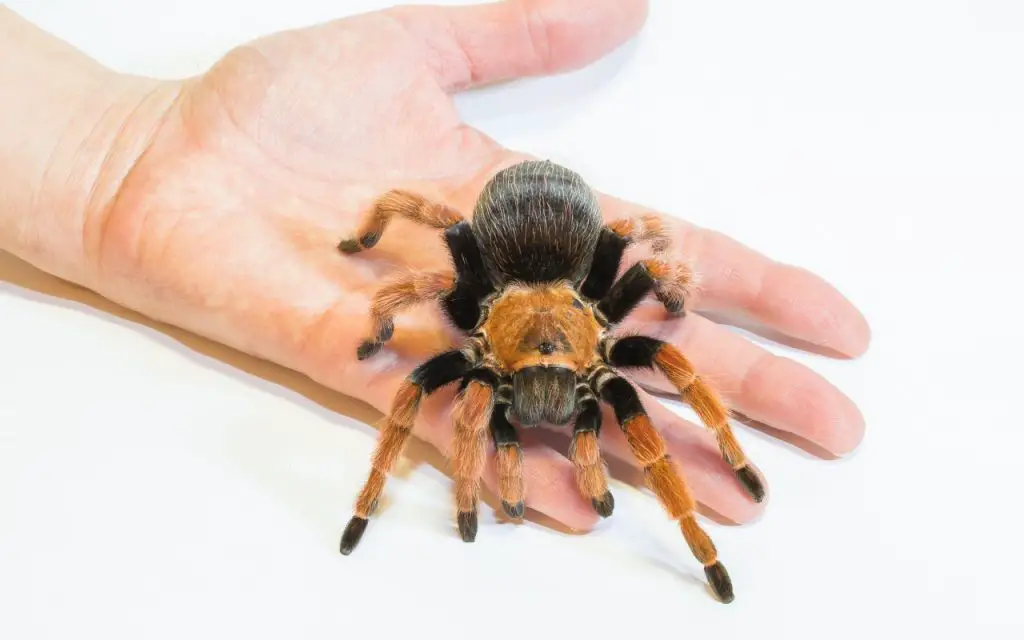
Arizona Blonde Tarantula being handled
4. Green Bottle Blue (Chromatopelma cyaneopubescens)
If you are looking for a good first tarantula, the Greenbottle Blue is one of the better options. This species is usually well-behaved and healthy, asides from being spectacular to look at. It’s also incredibly bright and beautiful to look at.
When choosing a pet tarantula, remember that though they are hardy, they still and require a certain type of enclosure. For a semi-arboreal species like this, choose a terrarium that’s about 5 gallons in size, but taller than it is wide.
The terrarium should have adequate ventilation. It’s also worth remembering that this species needs branches to climb on, especially if you want to observe it regularly.
Green Bottle Blue tarantulas as display animals
When choosing a terrarium, the Green Bottle Blue Tarantula is a good choice. These creatures are easy to handle and display. Their brilliant colors make them very entertaining to watch. Also, they don’t require a lot of care, making them an ideal choice for beginners. Compared to lizards and other pets, they are low maintenance and easy to care for.
Although the Green Bottle Blue is friendly and easy to care for, they can still bite or release their barbs. A Green Bottle Blue can also be a great display spider, and is one of the best pets you can get. These spiders can also be great pets for beginners. These tarantulas are easy to maintain, but it is important to make sure you take care of them.
This type of tarantula does best in an enclosure that maintains between sixty and seventy percent humidity. They require regular cleaning to eliminate trapped insects and dead bolus. You can decorate their enclosure with various items that have forest themes, including rocks and plastic plants. Real plants are also available, but they are harder to maintain and clean than the plastic variety. You can also place them on tree bark or shrubs.
To learn more, you can read our full Green Bottle Blue husbandry guide.
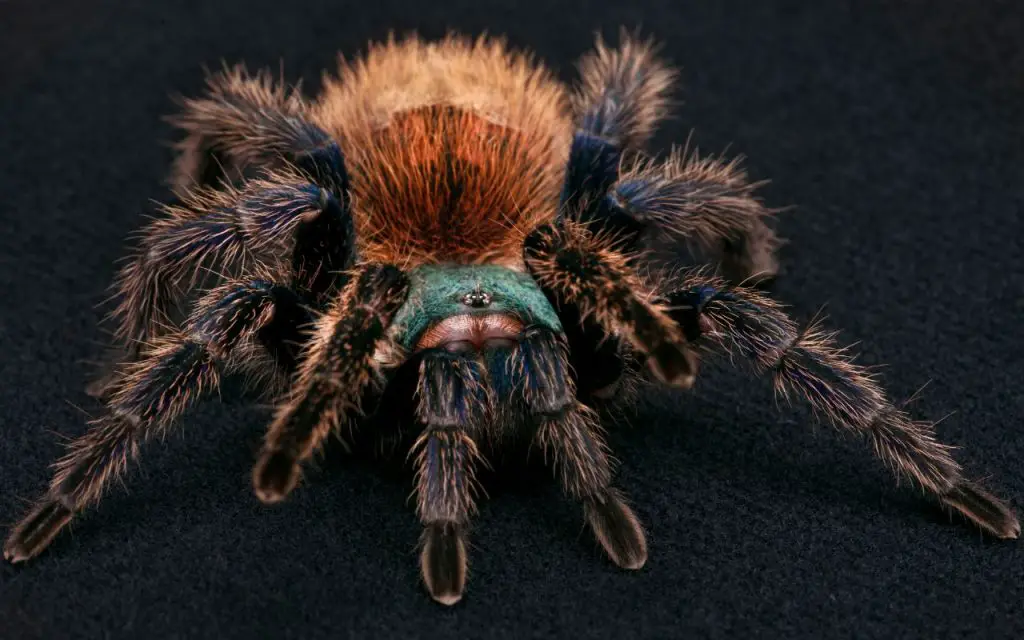
What you’ll need to care for a tarantula
1: An enclosure
Remember – always pick an acrylique enclosure for species that require high humidity, or a mesh topped enclosure for desert species, or one that requires high ventilation.
2. Substrate
Substrate must be good at maintaining humidity. Low humidity can quickly kill spiders.
3. Hiding places
Hiding places should be reasonably snug. For arboreal or semi-arboreal species like the Green Bottle Blue, choose hiding places that are tall if you can.
4. A water dish
Tarantulas may drown in large or deep water bowls. Instead, opt for small bowls that are less than the spiders body thickness deep. You can also add sponge or pebbles to them to help prevent drowning.

5. Feeder bugs
Any of the prey items listed below are great for tarantulas, just make sure you order the right size! Large for adult spiders, and small for spiderlings up to a couple of inches in legspan.
Summary
Each of these species is a great pet – but they all have different characteristics and behaviors. Whichever one you go for, you won’t be dissapointed.
As you’ll probably find out, keeping tarantulas quite quickly turns into a hobby – then an obsession. To help you make your final decision, I’ve outlined a few ways each species differs in a tablle below (turn your device to landscape if you have trouble seeing all of it)
| Species: | Habits: | Temperament: | Visibility: | Availability: |
| Chilean Rose | Terrestrial | Variable | Average | High |
| Mexican Red Knee | Terrestrial | Docile | Average | High |
| Arizona Blonde | Terrestrial | Very Docile | Low | Average |
| Green Bottle Blue | Semi-arboreal | Variable | High | High |


 Acrylique enclosure for tarantulas
Acrylique enclosure for tarantulas Enclosure with mesh top for increased ventilation
Enclosure with mesh top for increased ventilation The Bio Dude Bioactive Substrate
The Bio Dude Bioactive Substrate Repti Earth Coco Coir bedding
Repti Earth Coco Coir bedding Small Hiding Cave
Small Hiding Cave Skull cave VERY COOL!
Skull cave VERY COOL! Josh’s Frogs Feeder Crickets
Josh’s Frogs Feeder Crickets Josh’s Frogs Live Mealworms
Josh’s Frogs Live Mealworms DBDPet Live Hornworms
DBDPet Live Hornworms



